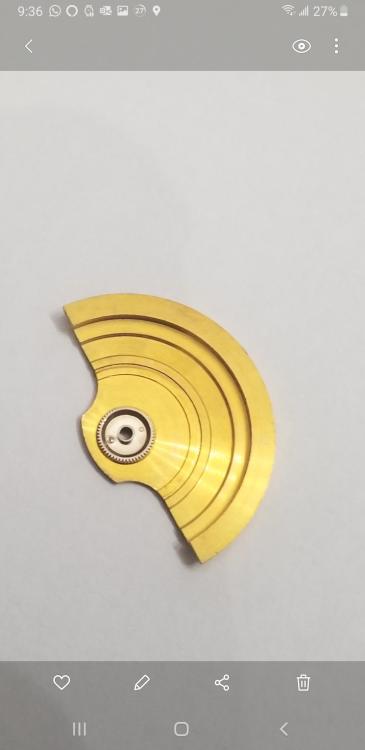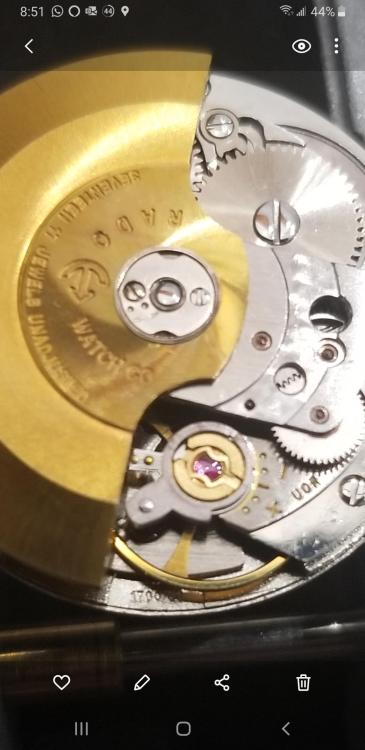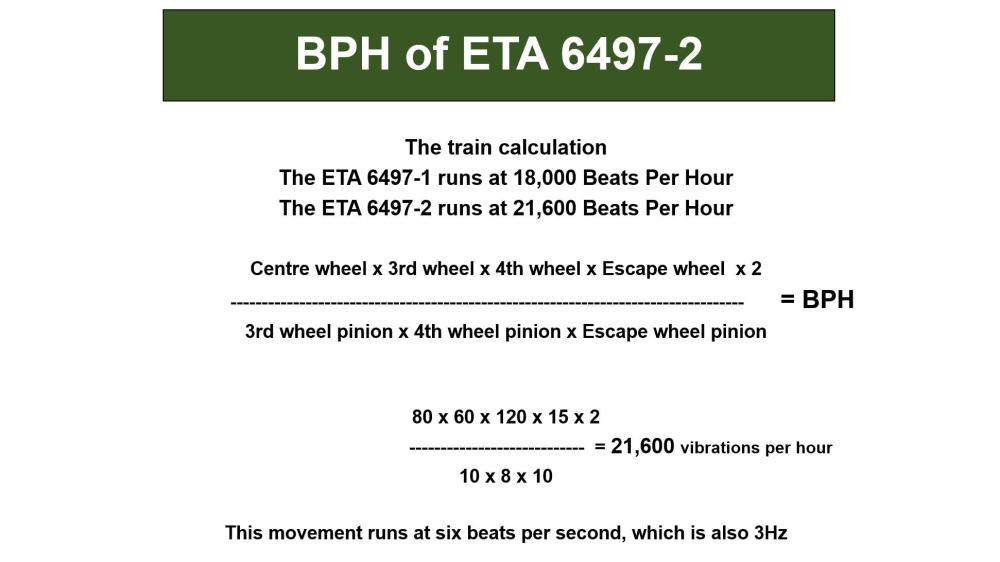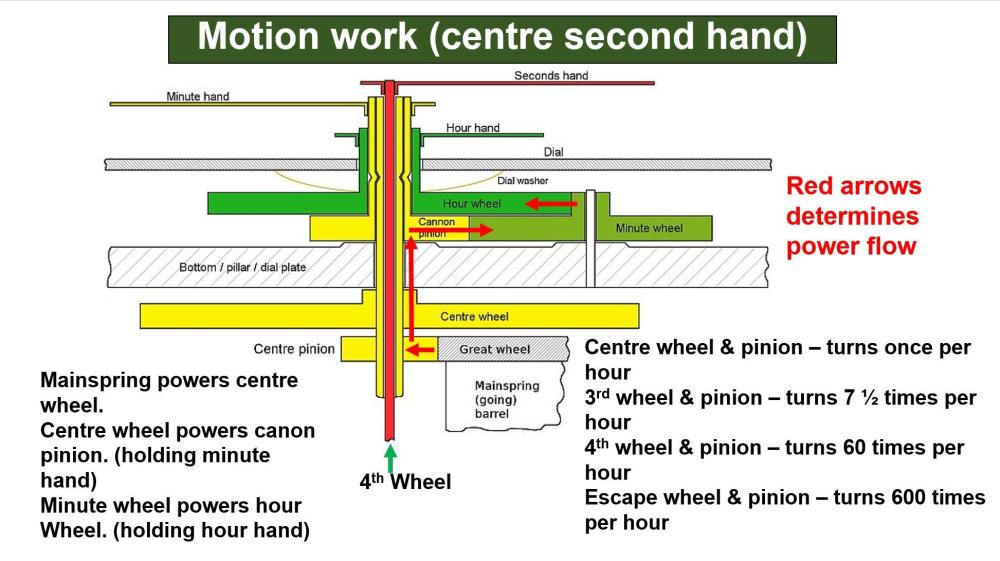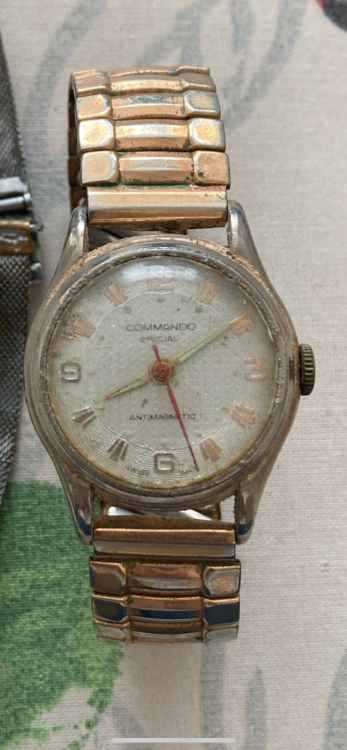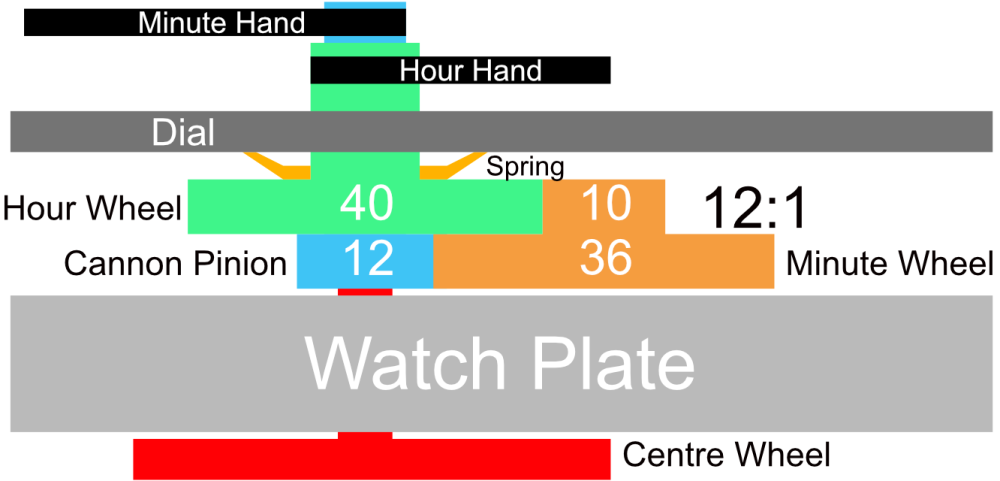All Activity
- Past hour
-
Thanks for your answers! There seems to be a contradiction between these two answers, so perhaps I need to clarify. The flat and convex jewels look identical on the side facing away from the pivot shoulder. That is, there is an oil reservoir. I don't know if that changes anything but I thought it was safest to clarify since I didn't include a picture of the jewels from the opposite side.
-
JohnR725 started following Incabloc Lyre Spring & Low Earth Orbit
-
Thank you for your introduction and welcome to this friendly forum. We all look forward to your contributions and continued involvement. When it comes to tools buy the best you can afford a good set of watch makers screwdrivers if you look after them will last you a life time. I recommend Dumont tweezers Number 3 and number 5 for fine work, you can build up from there. You will need different strength eye glasses. Some now like to work using a microscope. Pliers the box jointed ones are best they don't go out of line.
- Today
-
Commando special
transporter replied to transporter's topic in Your Current Projects and Achievements
That we will, don’t really mind what the movement is, I’d like to find info on the maker, google is a little sparse and none of my reference books are coming up with anything -
Welcome to the forum, enjoy. Purchasing the best quality tools (if affordable) is the best option. However the skill of how to use them is even more important.
-
RichardHarris123 started following Introduction and Commando special
-

Commando special
RichardHarris123 replied to transporter's topic in Your Current Projects and Achievements
My guess, a pin pallet, BFG? We'll see. -
@Randy55 welcome, here are some screwdrivers I can highly recommend, not the cheapest out there, but I prefer them to my Bergeon ones.: And for tweezers I can't recommend highly enough the CousinsUK own brand titanium (link here), I even prefer them to the Dumont tweezers I have, here is my write up: Other piece of advice would be to 'cut to the chase' and get a trinocular microscope on a boom arm, I tried all kinds of loupes and visors etc, but now do 90% of my work on the scope.
-
RonaldS joined the community
-
qrc04073 joined the community
-
Hello and welcome from Leeds.
-
Unfortunately I'm not that lucky. I started on the train side and after I noticed the binding I pulled everything out except the driving wheel to rule everything else out. It still binds. I'm going to double check that the pinion is fully seated on the staff first, then if no joy I'll push the bridge jewel up a fraction of a mm. Fingers crossed!
-

Rado rotor removal
Waggy replied to doober's topic in New to watch repair ** Safe Zone For Learner Watch Repairers **
Happy to have helped, great way to start the day with a win! -

Rado rotor removal
doober replied to doober's topic in New to watch repair ** Safe Zone For Learner Watch Repairers **
-
I have that French tech sheet too, it is a little different than the English one (eg, it doesn't have the auto works diagram). BTW, it looks like you are looking up the case number in the 1979 ABC supplement. The 1974 ABC catalog does have the 3093 case. As you determined it takes the 1222-5 crystal. When I serviced my President 'A' (which also takes that crystal), I was able to fit a 29.8 crystal from my DPA crystal assortment. Those are, in my opinion, a great deal. The assortment comes with 10 sizes each from 27.8mm to 32.4mm in 0.2 increments. I pretty much use them for any non-armored crystal that takes a high dome crystal. I think they no longer make them but Cousins has still has some in stock but when I bought them they were around $40 for the set and now they are around $100. Still, at 40 cents a crystal it's still a good deal. For the large driving wheel, I remember I once assembled the keyless/motion works first and when I placed the large driving wheel it was interfering with the setting wheel on the dial side as the teeth were not fully meshing and it wouldn't fully seat. If that isn't the issue I got nothing and am looking forward to see how you solve it
-

Rado rotor removal
Waggy replied to doober's topic in New to watch repair ** Safe Zone For Learner Watch Repairers **
Not sure, but just looking at it, it seems like the screw on the right may be a fake? The one on the left may not be a screw in the regular sense at all, rather a 2 position device, I think you need to point the slot towards either of the 2 dots and one will secure and one will open. Like I said this is just my best guess looking at the pictures. -
doober started following Rado rotor removal
-
Hi! I am in the process of restoring a rado captain cook mkII. I want to remove the rotor, but I am not sure how to and need some help. As you can hopefully see on the photo there are 2 screws. The left one has two positions, the right one looks like a regular screw. I have tried turning the right one, but it does not give even after using more force than I would expect. Anyone know the function of the left screw with the two positions and how to remove the rotor? Thanks!!
- Yesterday
-
Welcome to the group Stirky. You can search for just about every subject in the craft here. Don't be afraid to ask if you can't find the answer that may have already been covered ( some ad nauseum LOL ). You don't have to buy Bergeon to get good quality. There are many decent mid-range tools available that will last you a lifetime. Cousins would be a good place to start . Cheers from across the pond ! Randy
-
Jon started following Diagram for 6497 motion works and What are these Seitz B-Jewels?
-
Great diagram with the teeth and pinion count. Simple way to reduce the speed of the hour wheel by the 12:1 minute wheel. Genius and yet so simple. Always good to reinforce the principal by what you have done in your drawing. Keep doing that. I had a drawing on my wall for years showing me this which is very similar to the drawing you have done. Here's a formula to work out the beats per hour of a watch movement. The movement's BPH is dictated by the wheel teeth and pinion count and the hairspring being vibrated to the correct BPH by finding the pinning up point on the hairspring using a vibrating tool. The reason in the formula there is X2 on the top line is because there are two pallet stones.
-
So I just wanted to say "thank you" again. The angle is the key bit it seems and yes, it did basically just fall, or float, back into position when I got it lined up just right. I had meant to add that now that I see how it goes in, I totally see how it came out in the first place, and that whomever cloned the original movement didn't pay much attention to the fine details around the setting or how it interfaces with the balance cock or the "rings" on the regulator and/or stud carrier arms.
-
Well I’ve never seen the make before and cannot find any info, I haven’t got it just yet it’s been left to me among a 1970’s sea master and a mid size yeoman. But if anyone has any information on this one please feel free to enlighten me, many thanks
-
Hello Horologists, thought I'd introduce myself. I'm a 50ish year old who has been dabbling in watches for a while, did a couple of BHI course here in the UK and have started to dabble at bit more. I also took the level 1 course, which was a good refresher. Now off to look at some Bergeon tools and then buy (and regret buying) the cheaper ones... Stirky.
-
Bench mat
VanDan replied to Takeitapart's topic in New to watch repair ** Safe Zone For Learner Watch Repairers **
That's a really good idea! I have a 3d printer, I think I'll design something that I can clip on to the edge of my desk to do the same. Thanks for the idea. -
RichardHarris123 started following What are these Seitz B-Jewels?






